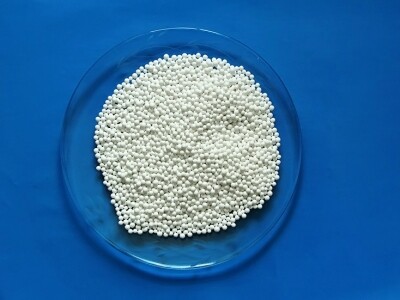NEWS
Activated Alumina vs. Silica Gel: Which is Better?
When comparing desiccants for industrial applications, the debate between activated alumina and silica gel remains critical. Activated alumina stands out for its high moisture adsorption capacity, thermal stability, and cost-effectiveness in harsh conditions. This in-depth analysis examines their chemical properties, performance metrics, and optimal use cases—helping technical evaluators and operators make data-driven decisions for moisture control solutions.
Chemical Properties and Structural Differences
Activated alumina (Al₂O₃) and silica gel (SiO₂) are both porous desiccants, but their molecular structures dictate distinct performance characteristics. Activated alumina derives from aluminum hydroxide through controlled calcination, creating a highly porous matrix with a surface area of 200-300 m²/g. Its amphoteric nature allows adsorption of both acidic and basic compounds, making it versatile for gas purification beyond moisture removal. Silica gel, synthesized from sodium silicate, features a narrower pore distribution (2-4 nm) and slightly lower surface area (750-800 m²/g for Type A). The hydroxyl groups on its surface enable strong hydrogen bonding with water molecules, but it lacks the thermal resilience of alumina. Under ASTM D1208 standards, activated alumina maintains structural integrity up to 500°C, whereas silica gel begins degrading at 220°C—a decisive factor for high-temperature processes like compressed air drying or hydrocarbon processing.
Performance Metrics in Industrial Applications
In moisture adsorption tests per ISO 12500, activated alumina demonstrates superior capacity in high-humidity environments (>60% RH), adsorbing 18-20% of its weight in water versus silica gel's 12-15%. However, silica gel outperforms in low-humidity conditions (<20% RH), achieving dew points as low as -60°C compared to alumina's -40°C. For dynamic applications like natural gas dehydration, activated alumina's crush strength (50-70 N/mm²) prevents attrition in pressurized beds, while silica gel's lower mechanical strength (30-40 N/mm²) may require frequent replacement. Cost analyses reveal alumina's advantage in long-term use: though 15-20% pricier upfront, its 3-5 year lifespan in aggressive chemical environments (e.g., HF-containing streams) contrasts with silica gel's 1-2 year replacement cycle. Notably, Molecular Sieve 13X offers an alternative for ultra-low humidity demands, combining alumina's thermal stability with silica's low-RH performance.
Industry-Specific Use Case Analysis
Maintenance and Regeneration Considerations
Both desiccants require periodic regeneration, but their protocols differ significantly. Activated alumina withstands 300+ thermal cycles at 200-300°C without significant capacity loss, making it ideal for pressure swing adsorption (PSA) systems. Silica gel's regeneration at 120-180°C demands precise temperature control to prevent hydrothermal degradation. In oil-laden environments (e.g., compressed air lines), alumina's oil-resistant surface retains 90% of its adsorption capacity after contamination, while silica gel may lose 30-40% efficiency. Field studies in petrochemical plants show alumina towers maintain<10% pressure drop over 3 years versus silica gel's 20-25% increase, reducing energy costs for blower systems. For operators prioritizing low maintenance, alumina's compatibility with steam sterilization (per ASME BPE standards) provides additional sanitization options.
Cost-Benefit Analysis for Procurement Teams
Total cost of ownership (TCO) calculations must account for replacement frequency, energy consumption, and downtime. While silica gel's initial price is $2.5-$3.5/kg compared to alumina's $3.8-$4.5/kg, the latter's 2-3x longer service life in abrasive applications lowers annualized costs by 15-30%. In cryogenic air separation units, alumina's ability to co-adsorb CO₂ extends compressor intervals, saving $12,000/year in maintenance per ISO 18753 estimates. Bulk purchasers should note alumina's 10-15% higher bulk density (0.7-0.8 g/cm³ vs. 0.6-0.7 g/cm³) increases shipping costs but reduces vessel sizing. For projects requiring extreme dryness (<1 ppm H₂O), hybrid systems pairing alumina pre-drying with Molecular Sieve 13X polishing optimize capital/operating expenses.
Why Choose Our Solutions?
With 20+ years serving chemical processors and energy providers, we engineer desiccant systems matching your operational parameters. Our activated alumina grades exceed ASTM F2799 specifications for acid resistance, while proprietary binders enhance attrition resistance by 40%. Contact our technical team for a free adsorption simulation based on your gas composition, flow rates, and dew point requirements.
Can't find what you're looking for ?
Leave a Message we will call you back quickly!
Get in Touch
*We respect your confidentiality and all information are protected.

